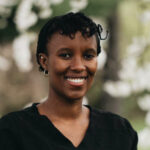Chinese Medicine Theory, what is collectively known as Traditional Chinese Medicine in the West, is heavily derived from philosophical contemplations of nature. Early Chinese Medicine practitioners sought to understand and organize the natural world into a system that not only mirrored the natural world but also the human body.
Wuxing, or otherwise known as Five Phases or Five Elements Theory, is born out of this philosophical tradition and in part, a further organizing principle of the Yin and Yang Theory, the most fundamental pillar of Chinese Medicine Theory.
Quick Links to the Sections Below
What is the Five Element Theory of Chinese Medicine?
Five Element Theory organizes the natural world and also the experience of human beings into a sophisticated model that seeks to understand and harmonize the relationships between and within the different elements.
As you can see in the diagram, there are five elements of association. Each element corresponds to certain organs in the human body, emotions, tissues of the body, sensory organs, voice sounds, colors, flavors, seasons of the year, and so much more.
To give you an example, the element of Wood corresponds to the liver and gallbladder, its season is spring. Its color is green, the voice of Wood is a shouting sound, the emotions include anger for the liver and timidity for the gallbladder, it corresponds to the sinews and tendons of the body, the eyes, and a sour flavor for taste.
How Acupuncturists Apply Five Element Theory
We find Five Element Theory helpful in piecing together the different aspects of our patients. We seek to understand whether the different elemental relationships support each other in a mutually beneficial way or if they are antagonistic and fail to nourish each other.
This delicate balance of support and enrichment can be strengthened by the use of acupuncture and herbal medicine. When putting herbal formulas and or acupuncture points together, we think of these relationships and how they present in each individual patient.
If the Five Element Theory model fits well with a patient’s presentations, we try to determine what elemental phases need to be strengthened or redirected. Then, by using modalities such as the pulse, the tongue, and the patient’s history, we are able to determine what herbal prescriptions and acupuncture points would be best.
Your acupuncturist will use your tongue, pulse, medical history, and current symptoms in conjunction with Yin and Yang Theory, Five Element Theory, and many others to create a customized plan for you because YOU deserve to feel better.
We find Five Element Theory particularly useful for mental and emotional presentations. As we’re finding out in Western Medicine, our mental emotional states can have a major impact on our physiology in ways that might not be very transparent and or in a linear cause and effect relationship. In such cases, Five Element Theory can be valuable in understanding the root cause of disease and imbalances.
A Rich Tradition of Ways to Help You Feel Your Best
As you can see, there’s a rich lineage of Chinese Medicine Theory at your acupuncturist’s disposal to help you feel your best. Your acupuncturist will use your tongue, pulse, medical history, and current symptoms in conjunction with Yin and Yang Theory, Five Element Theory, and many others to create a customized plan for you because YOU deserve to feel better.
To get started, head to our booking page and schedule your first appointment. If you’d like us to check your insurance benefits, we’d be happy to take care of that for you. We are in-network with CareFirst/BlueCross and Aetna.



